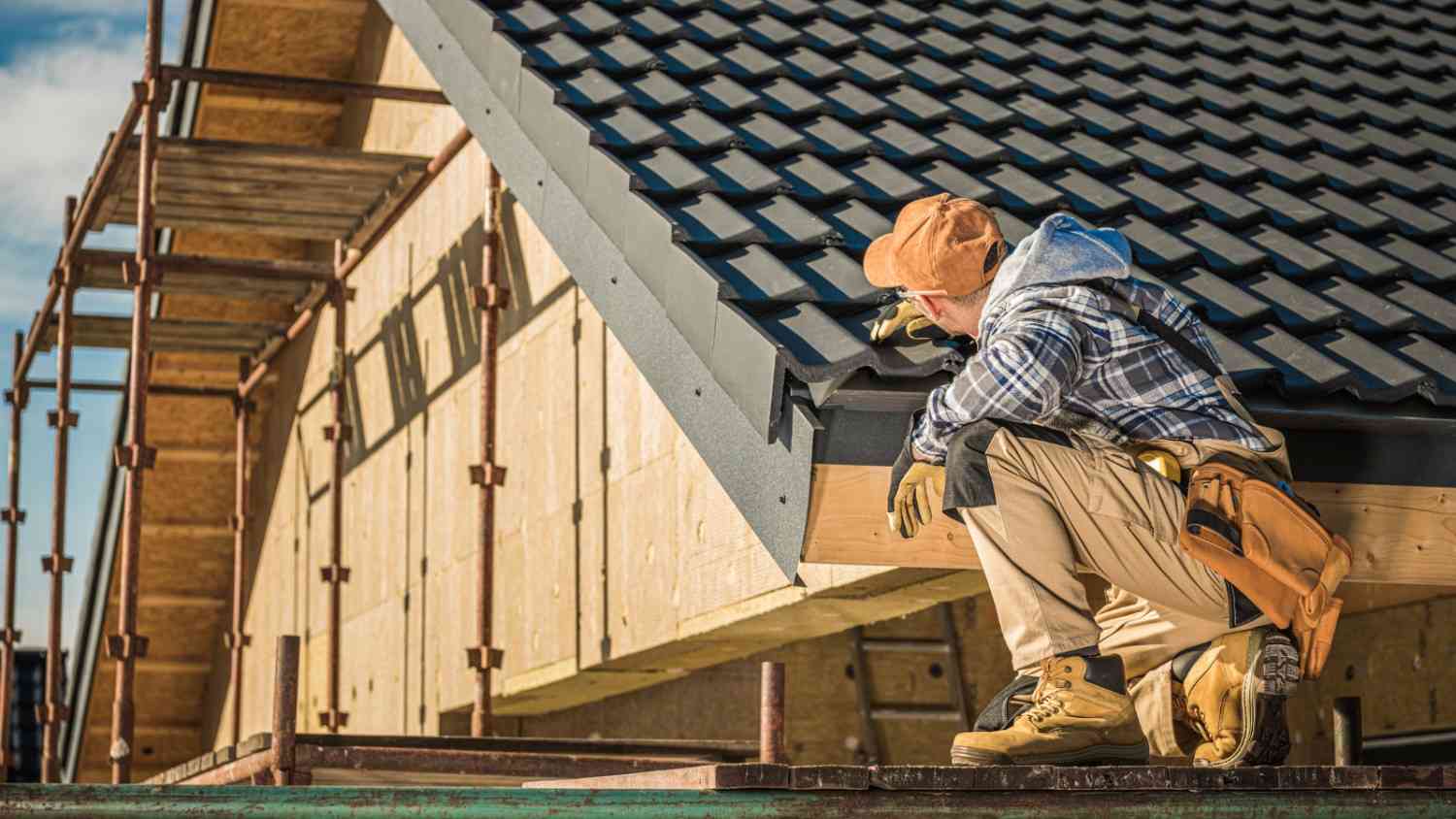A successful Orange County roof maintenance calendar accounts for its diverse microclimates. Schedule professional inspections twice yearly, spring (April) after winter rains and fall (October) before storms return. Perform monthly DIY checks focusing on shingles, gutters, and flashing. Coastal homes need extra protection against salt corrosion, while inland properties require UV damage prevention and wind reinforcement. Your specific maintenance needs will vary based on your home’s location and roofing materials.
Understanding Orange County’s Microclimate Zones
Although Orange County might seem like one uniform climate region, it actually contains several distinct microclimate zones that greatly impact your roof maintenance needs. The coastal areas experience milder temperatures with morning fog, while inland regions face more extreme temperature fluctuations and higher heat exposure.
These microclimate variations require different roofing approaches and maintenance schedules. Understanding Orange County microclimates and roofing materials is crucial for coastal homes that need protection against salt air corrosion and persistent moisture, while inland properties must withstand intense UV radiation and occasional heavy storms. Rainfall patterns differ too, with canyon areas receiving markedly more precipitation than coastal communities during winter months. Some foothill regions can collect up to 30% more annual rainfall than beach cities, meaning your roof may face very different moisture challenges depending on your exact location within the county.
Winter Preparation: December-February Roof Checks
You’ll need to inspect your roof for potential storm damage before Orange County’s winter rains begin in earnest. Schedule a professional pre-rain sealing service to address any vulnerabilities that could lead to leaks during the wettest months. Don’t wait until you’re dealing with water intrusion, early December is the ideal time to guarantee your roof is watertight for the season ahead.
Inspect for Storm Damage
The three most vulnerable periods for roof damage follow Orange County’s winter storms. You’ll need to conduct a thorough damage assessment within 48 hours after each significant rainfall, especially during December through February. Look for missing shingles, damaged flashing, and pooling water that signals drainage issues.
Don’t underestimate storm impact on seemingly minor elements. Check your gutters for debris accumulation that can prevent proper water flow. Examine your attic for water stains or moisture that indicates leaks not visible from outside. Use binoculars to safely inspect from ground level, but consider hiring professionals for steep roofs or when you notice significant issues that may require roof repair services.
Schedule Pre-Rain Sealing
Preparing your roof before Orange County’s rainy season arrives can prevent costly water damage and extend your roof’s lifespan. Winter months bring the most precipitation to our area, making December the ideal time for pre-rain sealing.
Schedule a professional inspection to identify vulnerable spots where water might penetrate. Focus on sealing around chimneys, vents, skylights, and aging flashing. You’ll want to use weather-resistant materials specifically designed for our mild but occasionally wet climate.
Don’t overlook small cracks or gaps, they’ll expand with moisture exposure. If you notice damaged shingles or tiles, replace them before the initial major rainfall. For flat roofs, verify drainage systems are clear and functional to prevent pooling water. This proactive approach saves you from dealing with leaks during the height of winter storms.
Spring Cleaning and Post-Rain Inspections
After winter storms have passed through Orange County, spring becomes the perfect time to assess your roof’s condition and address any damage. Schedule a detailed spring inspection in March or April to identify loose shingles, damaged flashing, or clogged gutters that winter rains may have caused.
Clear debris from valleys and gutters to prevent water pooling that can lead to leaks and structural damage. Look for water stains on your ceiling or walls, they’re telltale signs of roof leaks that need immediate attention. Understanding emergency roof leak scenarios can help you respond quickly when issues arise. Pay special attention to areas around chimneys, vents, and skylights where seals might have deteriorated.
Professional inspections are worth considering for thorough rain preparedness. They’ll spot potential problems you might miss, ensuring your roof remains in prime condition before summer’s heat arrives.
Summer Heat Defense: Protecting Against UV Damage
Orange County’s scorching summer sun can silently damage your roof when you least expect it. UV rays gradually break down roofing materials, causing premature aging, cracking, and color fading that compromise your roof’s integrity.
Apply reflective coatings to your roof in early summer to deflect harmful rays and reduce heat absorption. These coatings create a protective barrier that extends your roof’s lifespan while lowering cooling costs. Consider upgrading to heat resistant materials during replacements, options like specialized shingles or tiles designed to withstand intense sunshine.
Don’t overlook proper roof ventilation. A well-ventilated attic prevents heat buildup that can warp roofing materials from underneath. Schedule a roof installation assessment in June to evaluate your current UV protection strategy and identify vulnerable areas before peak heat arrives.
Fall Maintenance and Santa Ana Wind Preparation
Fall demands your immediate attention as Santa Ana winds can wreak havoc on vulnerable roofs throughout Orange County. You’ll need to schedule a thorough inspection before these powerful gusts arrive, focusing specifically on shingles, flashings, and vents that might have loosened during summer. Don’t forget to secure or remove any materials from your roof and gutters that could become dangerous projectiles during these notorious wind events.
Fall Santa Ana Inspections
As the summer heat subsides in Orange County, September marks the critical time for pre-Santa Ana wind roof inspections. Your fall inspections should focus on strengthening your roof’s wind readiness before these powerful gusts arrive in October and November.
Schedule a professional assessment that includes:
- Fastener inspection – Check for loose nails or screws that could allow shingles to lift during high winds
- Ridge and edge reinforcement – Verify areas most vulnerable to wind damage are secure
- Gutter cleaning – Remove debris that could become projectiles or cause water backup
- Tree trimming – Cut back overhanging branches that might break during wind events
Don’t wait until the Santa Ana winds arrive to uncover problems. Proactive inspections now prevent emergency repairs later when service providers are overwhelmed. Understanding common Orange County roofing issues that regular maintenance can prevent will help you prepare effectively.
Secure Loose Materials
Safeguarding your home begins with securing all loose roofing materials before Santa Ana winds arrive. Walk your roof perimeter and identify any lifted shingles, loose flashing, or detached tiles that could become dangerous projectiles during high winds. Replace missing secure fasteners immediately, as even one compromised area can lead to extensive damage.
Don’t overlook roof debris accumulation in valleys and gutters, these can block water flow and become airborne hazards during wind events. Pay special attention to satellite dishes, solar panel mounts, and HVAC equipment on your roof, ensuring all hardware is properly tightened.
For homes with Spanish tile roofs common in Orange County, check that mortar securing ridge tiles remains intact, as these decorative elements are particularly vulnerable to wind damage. Residents in coastal areas like Fountain Valley should pay extra attention to coastal Orange County repair challenges during these seasonal preparations.
Coastal vs. Inland Maintenance Requirements
Living in coastal Orange County greatly affects your roof maintenance schedule compared to inland areas. Salt air and stronger winds near the coast accelerate shingle deterioration, requiring more frequent inspections and treatments. Coastal shingles often need replacement every 15-20 years, while inland roofs may last 25-30 years with proper care.
- Inspection frequency: Coastal homes need quarterly checks; inland properties can manage with semi-annual inspections
- Salt damage prevention: Apply protective sealants annually on coastal roofs; every 2-3 years inland
- Moss/algae treatment: Monthly monitoring near the coast; seasonal inland
- Ventilation checks: Coastal homes require better ventilation systems to prevent moisture buildup, while inland insulation needs focus on heat resistance during summer months
Professional Inspection Schedule and DIY Monthly Checklists
Two essential components form the backbone of thorough roof maintenance in Orange County: professional inspections and regular homeowner checks. Schedule professional inspections twice yearly, once in spring (April-May) before summer heat and again in fall (October-November) before winter rains. These experts can spot issues invisible to untrained eyes.
Between professional visits, conduct your own monthly DIY checklists: examine shingles for damage, clear debris from valleys and gutters, check flashing around chimneys and vents, and look for interior signs of leaks. After storms, perform quick visual inspections from the ground using binoculars. During Santa Ana winds, be vigilant about falling branches that could damage your roof. Document all findings in a maintenance log to track your roof’s condition and share with professionals during inspections.
Modern technology like drone roof inspections can provide detailed assessments while understanding the impact of weather on roof maintenance helps you schedule appropriately. Consider the financial benefits of scheduled roof maintenance when planning your annual budget.
Extending Roof Lifespan: Material-Specific Maintenance Tips
Different roofing materials in Orange County demand specific maintenance approaches to improve their longevity and performance. Your roof’s lifespan can be greatly extended when you apply the right maintenance techniques for your specific roof materials.
- Clay and Concrete Tiles – Remove debris quarterly and replace cracked tiles immediately; avoid pressure washing which can damage protective coatings and create microfractures
- Asphalt Shingles – Inspect for curling, blistering or missing granules twice yearly; trim overhanging branches that can scratch the protective layer
- Metal Roofing – Check for loose fasteners and apply rust inhibitors annually; clean gutters monthly to prevent corrosive debris buildup
- Wood Shakes – Apply preservatives every 1-2 years and inspect for moss growth, especially in Orange County’s coastal areas
For comprehensive roofing services in specific areas, residents can connect with professionals in Garden Grove for localized expertise and service.
Frequently Asked Questions
Can HOA Regulations Restrict Certain Roof Maintenance Activities?
Yes, your HOA guidelines can definitely restrict certain roof maintenance activities. You’ll need to check your community’s specific maintenance restrictions before scheduling repairs or making changes to your roof.
How Do Solar Panels Affect Routine Roof Maintenance Schedules?
Solar panel placement restricts access to your roof areas. You’ll need to coordinate maintenance timing with your solar provider, working around panels for inspections and scheduling major roof work during panel maintenance periods.
What Insurance Discounts Exist for Documented Roof Maintenance?
You’ll enjoy insurance savings with proper maintenance documentation. Many insurers offer 5-15% discounts when you provide proof of regular inspections, repairs, and upkeep. Keep detailed records to enhance these valuable premium reductions.
Are Drone Inspections Effective for Orange County Roofs?
Yes, drone inspections are effective for Orange County roofs. You’ll benefit from drone technology’s ability to detect issues safely while providing extensive aerial views and detailed imagery. They’re especially useful for hard-to-reach sections.
How Does Roof Pitch Influence Maintenance Frequency Requirements?
Your roof pitch greatly affects maintenance frequency. Steeper roofs need less frequent cleaning as debris slides off, while low-pitch roofs require more regular inspections and maintenance to prevent water and debris accumulation.


